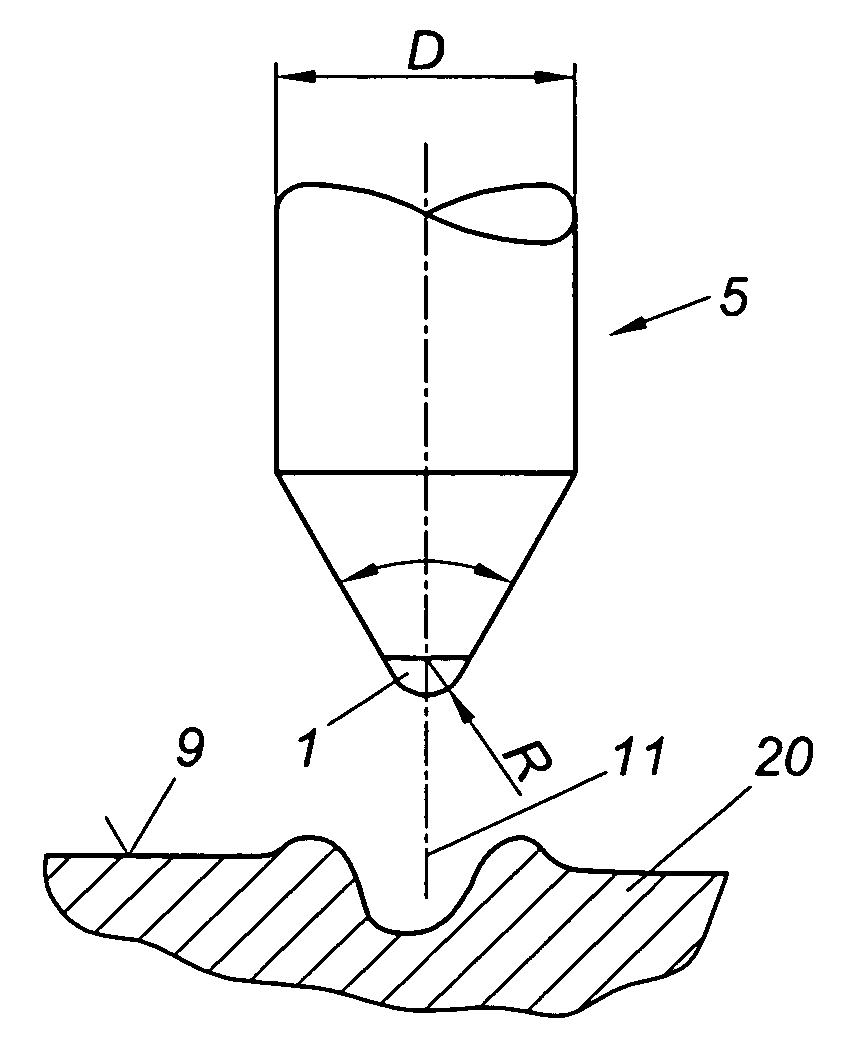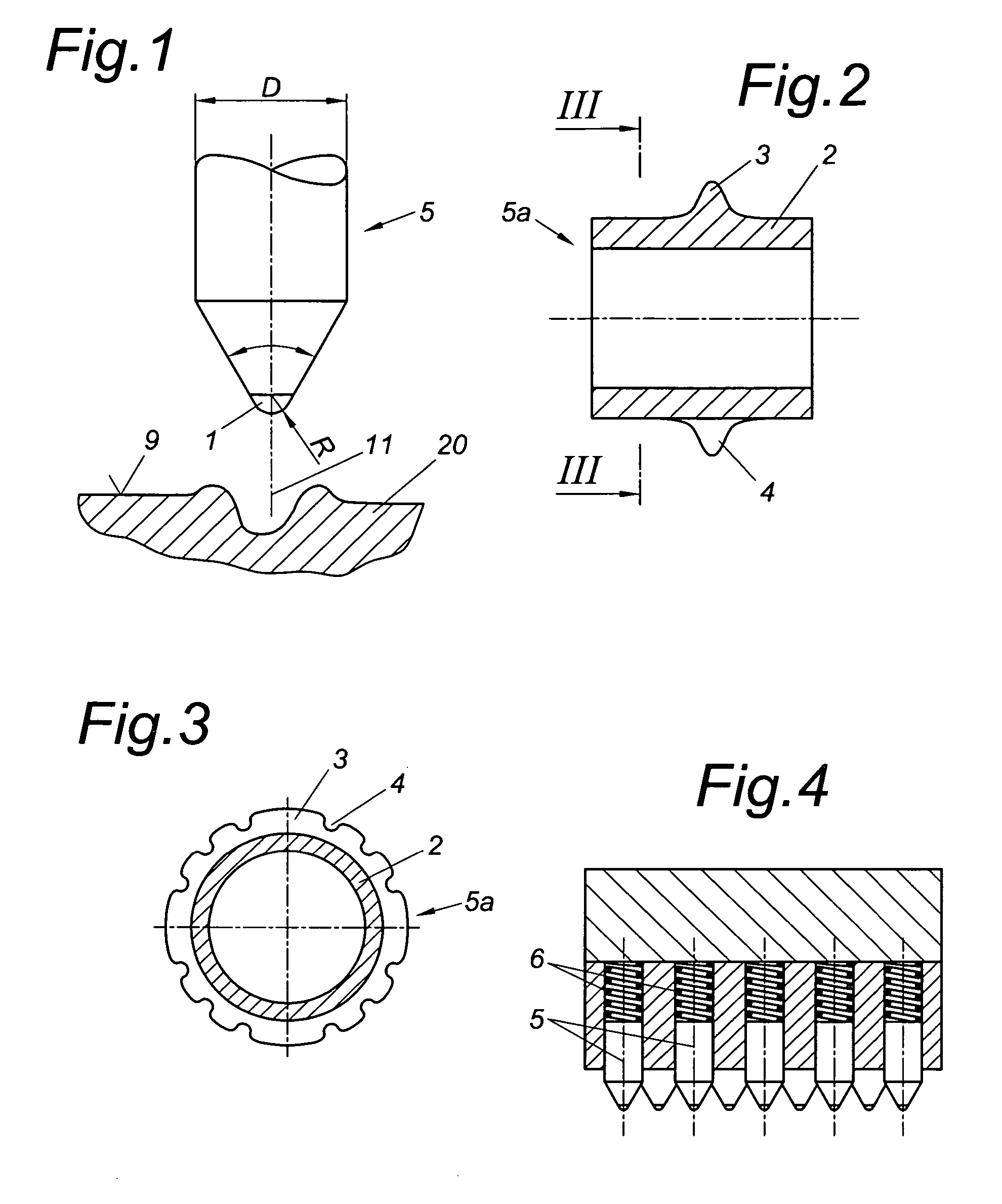Method for machining the running surfaces of winter sports appliances
a technology for running surfaces and sports appliances, applied in the direction of sports equipment, skis, skates, etc., can solve the problems of difficult deformation, difficult deformation, and difficult description of individual parties in friction such as track, snow and interposed water films,
- Summary
- Abstract
- Description
- Claims
- Application Information
AI Technical Summary
Benefits of technology
Problems solved by technology
Method used
Image
Examples
Embodiment Construction
[0027] The tool of FIG. 1 concerns an engraving diamond 5 with a shaft diameter D of 3 mm for example, a cone angle α of 60° and a radius R of the diamond tip 1 of 0.02 mm. The track blank is indicated with reference numeral 20.
[0028]FIG. 2 shows a cutting wheel 5a which consists of a cylindrical main body and a circumferential projection 3. FIG. 3 shows that the projection 3 comprises interruptions 4 which are distributed along the circumference.
[0029]FIG. 4 shows a multiple tool in which several diamond pins 5 are displaceable adjacent to one another in the longitudinal direction and are each pre-tensioned by a spring 6. Further pins are arranged with a gap in between behind the pins 5 of the first row in order to enable producing a higher groove density.
[0030]FIG. 5 schematically shows a section of a ski 7 with an exaggerated sidecutting. The steel edges 8 delimit the running surface 9. A plurality of grooves 11 is arranged at an angle p relative to the longitudinal axis 10a, ...
PUM
 Login to View More
Login to View More Abstract
Description
Claims
Application Information
 Login to View More
Login to View More - R&D
- Intellectual Property
- Life Sciences
- Materials
- Tech Scout
- Unparalleled Data Quality
- Higher Quality Content
- 60% Fewer Hallucinations
Browse by: Latest US Patents, China's latest patents, Technical Efficacy Thesaurus, Application Domain, Technology Topic, Popular Technical Reports.
© 2025 PatSnap. All rights reserved.Legal|Privacy policy|Modern Slavery Act Transparency Statement|Sitemap|About US| Contact US: help@patsnap.com



